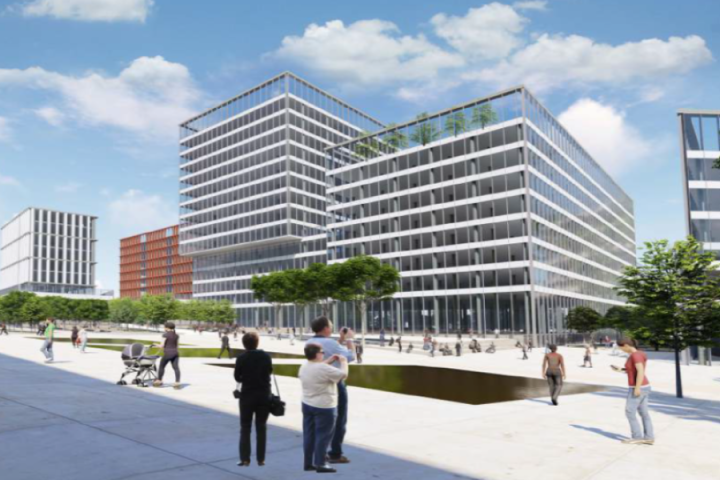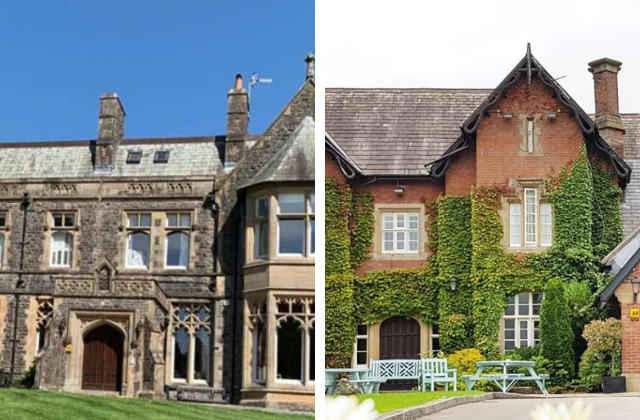The collapse of the £700m Tithebarn redevelopment plan in 2011 was seen at the time as a catastrophic blow to Preston’s fortunes. Today it is seen as the city’s lucky escape.
Tithebarn, which would have seen widescale shopping and leisure facilities and a new bus station built in the city centre, was abandoned after department store John Lewis pulled out saying it was no longer financially viable.
The bombshell announcement left the city bruised and battered and facing an uncertain future. But what has risen from the ashes of the failed scheme is a complete rethink of Preston’s regeneration strategy.
It proved to be that lucky break. Today, more than a decade after Tithebarn’s demise, the wide-ranging raft of vibrant schemes and strategies that emerged as a result are beginning to make an impact. Preston has a successful and growing city living plan and a clear vision for the historic Stoneygate area that is beginning to become reality. The transformation of the Harris Quarter includes the £45m Animate cinema and leisure development, currently coming out of the ground.
People in the city point out that none of this would have happened if Tithebarn hadn’t collapsed. They add that such a wide-scale retail-led scheme would be struggling today in the face of changing shopping habits and the mounting challenges facing the high street sector.
Preston city centre has its share of shuttered shops on its major shopping street, including the once-flagship Debenhams store and the long-closed BHS. However, there is a widespread feeling the situation would have been much worse if Tithebarn had gone ahead.
Entrepreneur Rob Binns owns the Cotton Court business centre in the city and chairs Downtown in Business in the county. He is also on the board of the Preston Partnership. He describes the Tithebarn collapse as the city’s “happiest accident.”
He says: “If Tithebarn had happened Preston would have been awash with retail which in today’s environment would have almost decimated the city centre.”
Preston’s much lauded city living strategy may also not have materialised. Today there are growing signs of the appetite being shown by investors.
Rob says: “What has emerged has been genuinely required. The leisure and retail offering, what is needed in office provision, it all wraps around what people actually need, rather than creating something and trying to shoehorn people into it.”
Chris Blackburn, head of city growth and regeneration at Preston City Council, says the collapse of Tithebarn didn’t seem like such a happy accident at the time. “It was a tough time and we had to rebuild,” he explains.
He says that at the heart of that rebuilding work was a “solid planning foundation” which was created to allow the shoots of regeneration to grow.
He says: “We started off back in 2014-15 saying we wouldn’t put all our eggs in the retail basket. We relaxed our rules in terms of protecting retail floor space in the city centre because we knew the direction of travel.
“We wanted to invite more flexibility, wider leisure and cultural uses, into the city centre. We wanted the restaurants.”
Chris says the city living strategy is beginning to make its mark. He says: “We’re seeing some great residential schemes coming out of the ground and some great values that five years ago we wouldn’t have thought possible.
“From a standing start we have been delivering 300-400 residential units a year over the last three or four years.”
Would-be investors continue to stress the importance of the leisure and cultural offer when it comes to attracting people to live in the city centre. Chris says: “We are making strides in terms of what we can do as a council.”
And he points to the significant investment of public money into Animate and the regeneration of the Harris Quarter.
He sees the recent creation of the Preston Regeneration Board as another big positive in the city’s continuing development story.
Made up of key stakeholders, including public and private anchor organisations such as the University of Central Lancashire (UCLan), the city and county councils and the Preston Partnership, it been set up to deliver a refreshed ‘City Investment Plan’, building on the recent successes.
Russ Millhouse is head of external and public affairs at UCLan. He says adopting a partnership approach is important to both thecity and the university’s future prospects.
As an anchor institution, UCLan is a major contributor to Preston’s economy and has invested massively in its campus in the city.
More than £60m was spent creating its impressive student centre and University Square. The university also employs more than 2,000 people locally.
Russ says a vibrant city centre is vital when it comes to attracting students. But the work doesn’t stop there, with the need to create the environment and opportunities that persuade them to remain after graduation, to work and live in Preston.
He says: “What the university needs on a student level is something we are always looking to evolve and in the most part Preston city centre responds really well to that.”
Deborah Smith is owner of Smith and Love Planning. The consultancy is based in Winckley Square, the city’s traditional business district.
She sees opportunities “on the horizon” for Preston centred around leisure and culture.
She adds: “What is coming on stream for 2025 is going to be really exciting for the city centre.”
Next year will see the much-awaited opening of Animate and the re-opening of The Harris, the cherished cultural institution in the heart of the city, following its £16m transformation.
Deborah acknowledges the challenges facing the retail sector but adds: “That is not exclusive to Preston, it is happening all over.”
She would like to see Preston’s city living strategy developed further to offer more for families and older people.
Deborah says: “Preston has the ingredients to be absolutely brilliant and there are things on stream that will help with that. But it needs more for all ages and to diversify more into leisure and culture.”
Rizwan Seth is managing director of W_rkspace, the operator of several business centres in the city. He says Preston is “on the way up after years of stalling and going sideways.”
He acknowledges the positive impact of Preston’s city living strategy but believes more “work and play” needs to be added to the mix.
Rizwan believes there are investors waiting to see the completion of projects before committing. He says: “It’s a confidence thing. It will be different once they come on stream. Hopefully they will kick-start that investment.”
Kimberley Barrett-St Vall is a partner at AfterAthena, part of the Napthen’s law group. She works from its offices in the city’s traditional business district.
She says: “It’s great to hear all the plans and that is exciting, but what’s the momentum now?”
Kimberley highlights that in her world of professional services, the leisure and retail offer is increasingly important when it comes to delivering what city centre workers want and expect. “It’s what’s going to draw people in,” she says. “It is all about that additional offering.”
John Bridge, of Studio John Bridge Architects, is a long-standing champion of the city. He recently unveiled his vision for one of Preston’s most iconic streets – Winckley Street – that includes a sustainable eco-design glass canopy.
And he is also the architect on the project to re-develop the city’s iconic grade II listed Harris Institute in Avenham, another of Preston’s imposing Victorian treasures.
John says: “If you could put a gauge on the temperature in Preston right now, it’s getting warmer. City living, Stoneygate, the station gateway – there is everything there for the taking for an investor.
“We, as architects, are ready to draw and I’m quite excited for the first time in a few years.
“I’ve always been pro-Preston, an enthusiast, but I’ve been down about it a few times because as a resident, an architect, a dad, you look and you think we can do better; we just deserve better.”
However, he believes all the ingredients are now there for success, pointing to the city’s heritage, its academic institutions including UCLan, and its range of employers.
John says: “The investors are interested and there’s a lot of good stuff on the horizon. For me, we need more of the good stuff.”
Enjoyed this? Read more from Ged Henderson























